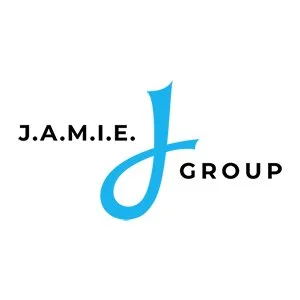Understanding Meningitis Disease
\
Understanding Meningococcal Disease
Meningococcal disease is a rare but serious bacterial infection caused by Neisseria meningitidis. It can lead to two life-threatening conditions: meningitis, which is the inflammation of the protective membranes surrounding the brain and spinal cord (the meninges), and septicemia, a bloodstream infection that spreads toxins rapidly throughout the body.¹⁻³
Meningitis can cause swelling that results in brain damage or death. Septicemia often progresses with alarming speed—leading to dangerously low blood pressure, multiple organ failure, and death in some cases.³⁻⁵ In its early stages, the disease can resemble the flu or other common illnesses, making it difficult to diagnose. Tragically, meningococcal disease can take the life of an otherwise healthy child or young adult in as little as 24 hours.⁶⁻⁷
Learn more about meningitis »
Effects of Meningococcal Disease
The impact of meningococcal disease on individuals and families is profound. Even with prompt medical treatment, 1 in 10 people who contract meningococcal disease will die. Among survivors, 1 in 5 experience serious long-term effects, including:³⁻⁴
Limb, finger, or toe amputation
Severe scarring or skin grafting needs
Brain damage and learning disabilities
Hearing loss
Kidney damage
Emotional and psychological trauma such as anxiety, depression, and difficulty reintegrating into daily life
These long-lasting consequences make prevention not only a public health priority, but also a deeply personal one for many families.
\
Preventing Meningococcal Disease
Vaccination is the most effective way to protect children, adolescents, and young adults from meningococcal disease.¹⁻³
There are vaccines that help protect against the five main serogroups of Neisseria meningitidis: A, B, C, W, and Y. Recent advances, including the FDA approval of pentavalent meningococcal vaccines like Pfizer’s Penbraya (2023) and GSK’s Penmenvy (2025), now make it possible to receive protection against all five in a single shot.⁸⁻¹⁰
Parents and caregivers are encouraged to speak with their healthcare provider to review vaccination records and ensure their child is fully protected against this fast-moving and devastating disease.
Meningitis “B” Breakthrough (2015)
Prior to 2014, the available meningococcal vaccines in the United States provided protection against four of the five major serogroups responsible for meningococcal disease: A, C, W, and Y. The fifth serogroup, Neisseria meningitidis serogroup B (commonly referred to as “MenB”), remained unaddressed by routine immunizations. This was particularly concerning as serogroup B is more commonly associated with outbreaks among adolescents and young adults, especially in college settings.¹
The breakthrough came between 2014 and 2015, when the U.S. Food and Drug Administration approved two separate vaccines—Bexsero (Novartis/GSK) and Trumenba (Pfizer)—designed specifically to protect against serogroup B.² This marked the first time that vaccines covering all five preventable serogroups (A, B, C, W, and Y) were available in the U.S.
Despite the scientific progress, data showed that vaccine series completion rates for MenB remained low, in part due to its classification as a “Category B” or “permissive” recommendation by the Advisory Committee on Immunization Practices (ACIP).³ Under this guidance, families were encouraged to consult with healthcare providers to determine if MenB vaccination was appropriate based on individual risk factors.
Still, the approval of MenB vaccines represented a major public health milestone and an important step toward broader protection against meningococcal disease.
Pentavalent Vaccination Breakthrough (2023)
In October 2023, the ACIP voted to recommend Pfizer’s pentavalent meningococcal vaccine, Penbraya, for use in individuals aged 10 years and older when both MenACWY and MenB vaccines are indicated at the same visit.⁴ Penbraya combines protection against all five major serogroups—A, B, C, W, and Y—into a single vaccine, streamlining protection and potentially improving vaccine compliance.
As of May 2025, no additional ACIP votes have been taken regarding pentavalent meningococcal vaccines.⁵ An update from the ACIP on GSK’s pentavalent candidate, Penmenvy, which received FDA approval in February 2025, is still pending.⁶ We will provide further updates as new recommendations become available.
References
Centers for Disease Control and Prevention (CDC). Epidemiology and Prevention of Vaccine-Preventable Diseases (The Pink Book). https://www.cdc.gov/vaccines/pubs/pinkbook/mening.html
CDC. Meningococcal Disease: Clinical Features. https://www.cdc.gov/meningococcal/clinical-info.html
CDC. About Meningococcal Disease. https://www.cdc.gov/meningococcal/about/index.html
MacNeil JR, et al. (2015). Use of Serogroup B Meningococcal Vaccines in Adolescents and Young Adults: ACIP Recommendations. MMWR, 64(41):1171–1176. https://www.cdc.gov/mmwr/preview/mmwrhtml/mm6441a3.htm
National Meningitis Association. Facts and Figures. https://www.nmaus.org
Meningitis Research Foundation. Symptoms and Outcomes of Meningitis and Septicaemia. https://www.meningitis.org
CDC. Fast Facts on Meningococcal Disease. https://www.cdc.gov/meningococcal/fast-facts.html
CDC. (2023). ACIP Recommends Pfizer’s Penbraya for Simultaneous MenACWY and MenB Coverage. MMWR. https://www.cdc.gov/mmwr/volumes/72/wr/mm7242a4.htm
GSK. (2025, February 17). FDA Approves GSK’s Pentavalent Meningococcal Vaccine, Penmenvy. https://www.gsk.com
CDC. (2025). ACIP Meeting Calendar and Updates. https://www.cdc.gov/acip/meetings/index.html


